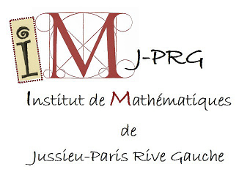| Résume | The index theorem for compact manifolds with boundary, established by Atiyah-Patodi-Singer in 1975, is considered one of the most significant mathematical achievements of the 20th century. An important and curious fact is that local boundary conditions are topologically obstructed for index formulae and non-local boundary conditions lie at the heart of this theorem. Consequently, this has inspired the study of boundary value problems for first-order elliptic differential operators by many different schools, with a class of induced boundary operators taking centre stage in establishing non-local boundary conditions.
The work of Bär and Ballmann from 2012 is a modern and comprehensive framework that is useful to study elliptic boundary value problems for first-order elliptic operators on manifolds with compact and smooth boundary. As in the work of Atiyah-Patodi-Singer, a fundamental assumption in Bär-Ballmann is that the induced operator on the boundary can be chosen self-adjoint. All Dirac-type operators, which in particular includes the Hodge-Dirac operator as well as the Atiyah-Singer Dirac operator, are captured via this framework.
In contrast to the APS index theorem, which is essentially restricted to Dirac-type operators, the earlier index theorem of Atiyah-Singer from 1968 on closed manifolds is valid for general first-order elliptic differential operators. There are important operators from both geometry and physics which are more general than those captured by the state-of-the-art for BVPs and index theory. A quintessential example is the Rarita-Schwinger operator on 3/2-spinors, which arises in physics for the study of the so-called delta baryons. A fundamental and seemingly fatal obstacle to study BVPs for such operators is that the induced operator on the boundary may no longer be chosen self-adjoint, even if the operator on the interior is symmetric.
In recent work with Bär, we extend the Bär-Ballmann framework to consider general first-order elliptic differential operators by dispensing with the self-adjointness requirement for induced boundary operators. Modulo a zero order additive term, we show every induced boundary operator is a bi-sectorial operator via the ellipticity of the interior operator. An essential tool at this level of generality is the bounded holomorphic functional calculus, coupled with pseudo-differential operator theory, semi-group theory as well as methods arising from the resolution of the Kato square root problem. This perspective also paves way for studying noncompact boundary, Lipschitz boundary, as well as boundary value problems in the Lp setting. |

